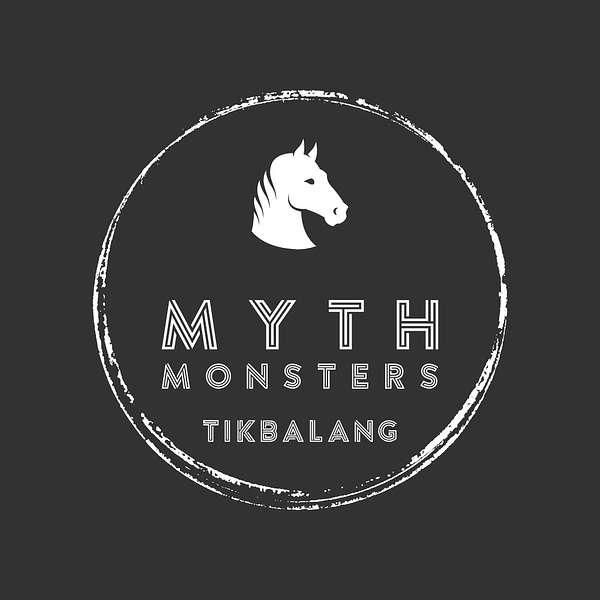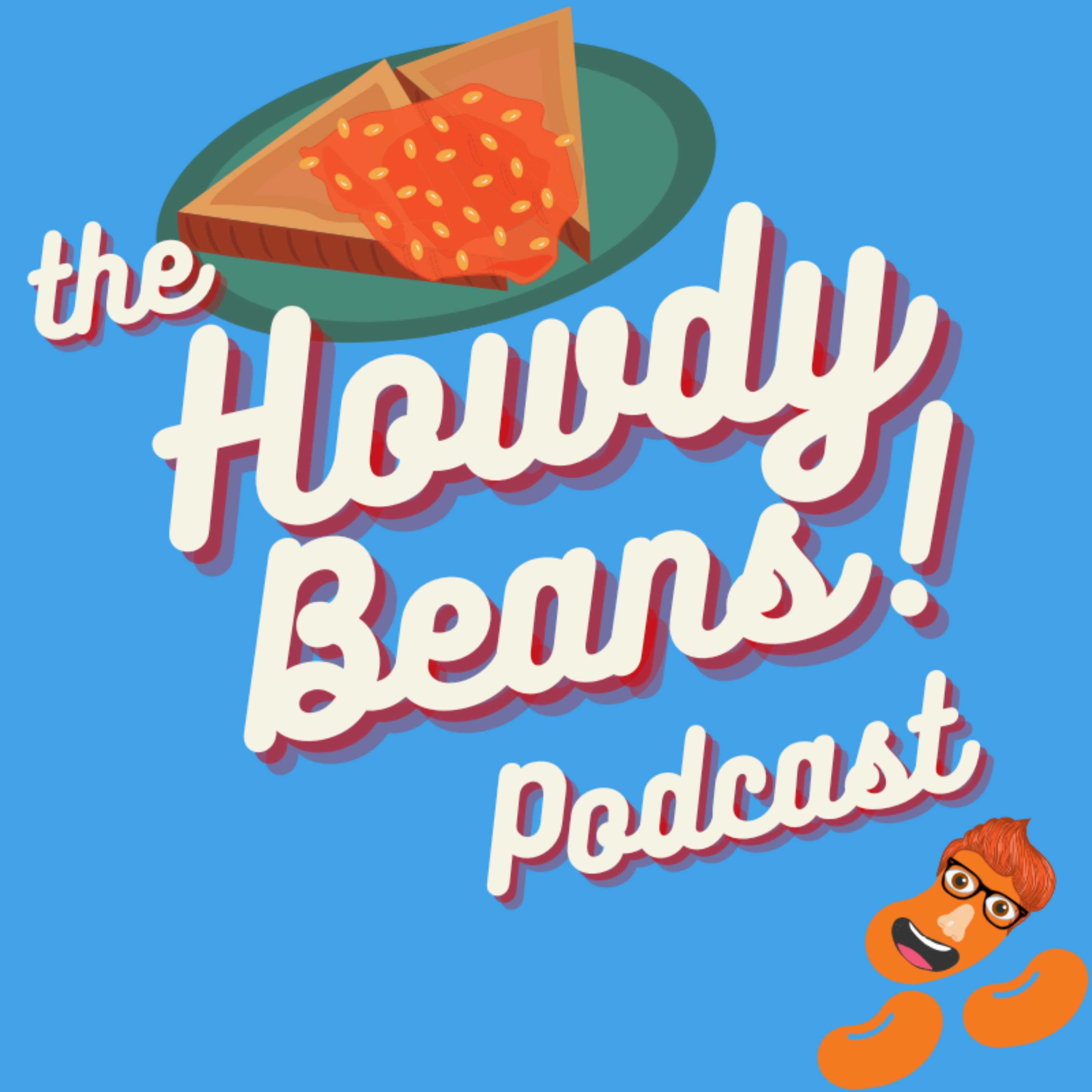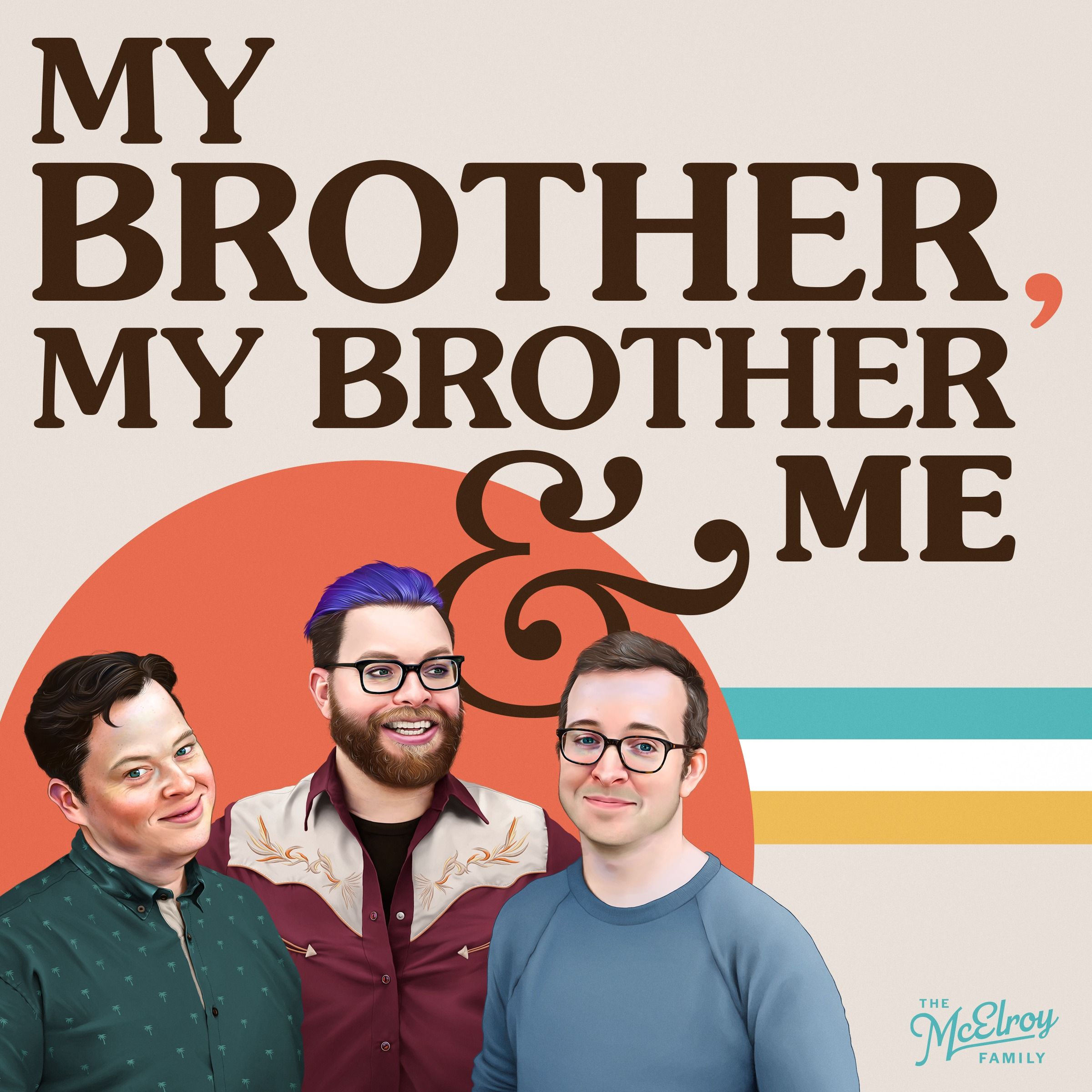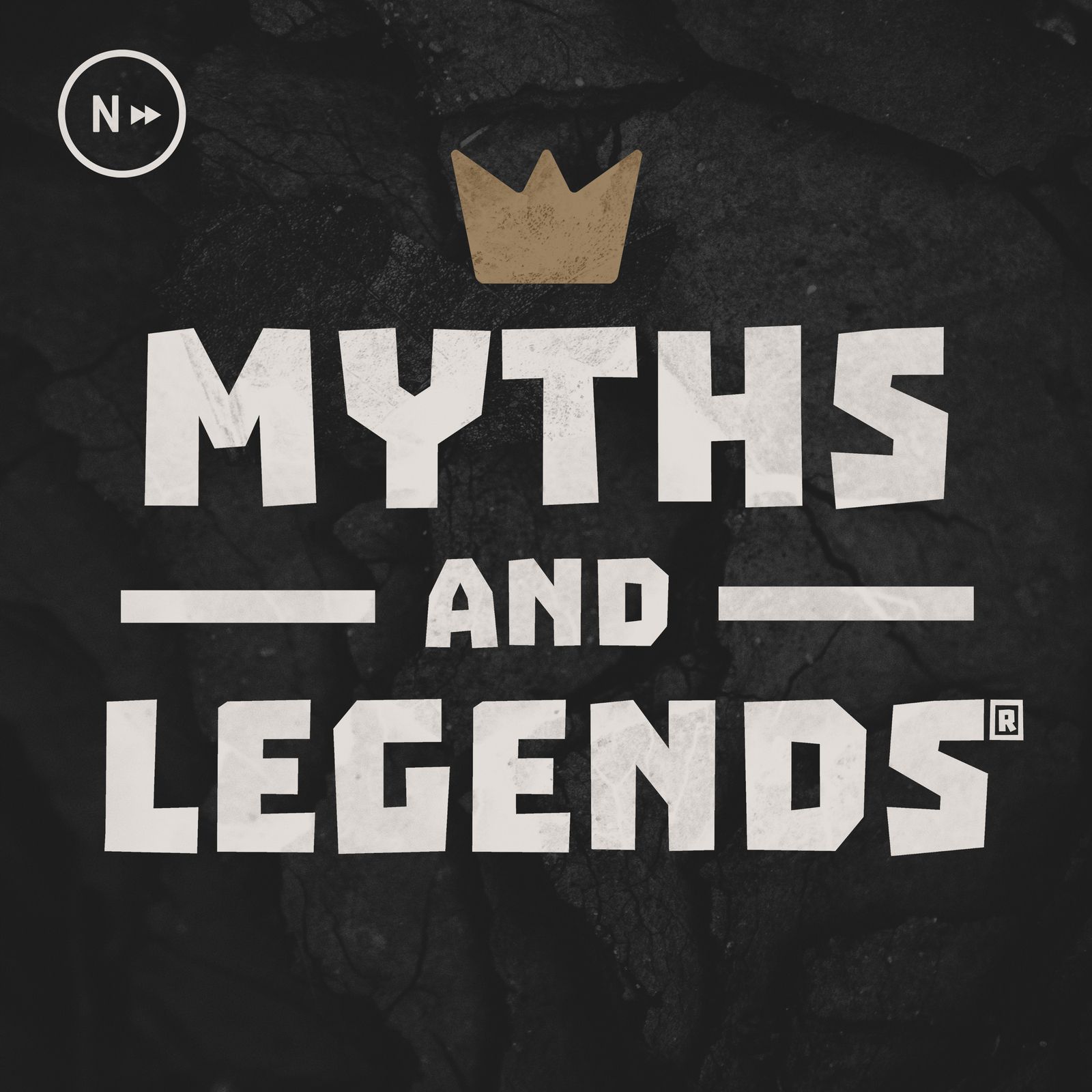
Myth Monsters
A bite sized look into the monsters of global folklore, cryptozoology and mythology with your host, Erin. Jump in and learn about your favourite monsters from Gorgons to Kelpies, to Wendigos to Bigfoot. Stay spooky every Thursday with a new episode with a new monster from another culture. Get in touch on Twitter at @mythmonsterspod
Myth Monsters
Tikbalang
In this episode, we're heading over to the Philippines for a wacky and wonderful monster, the Tikbalang! How does this monster link to male sexuality? Why does wearing your clothes inside out prevent them from seeing you? Find out this week!
You can find us on:
Social media:
INTRO:
Hello and welcome to Myth Monsters, my name is Erin and I’ll be your host for these little snack bite size podcasts on folklore and mythical monsters from around the world.
These podcasts focus on the actual cryptids, folklore and mythic monsters from global mythology, rather than focusing on full stories of heroes and their big adventures.
I’ll also be dropping in some references that they have to recent culture and where you can see these represented in modern day content so you can learn more, and get as obsessed as I am about these absolute legends of the mythological world.
The spring is in full swing here at the moment and whilst I’m revelling in the sunshine, my poor little ginger skin is not and I have very nearly been sunburnt multiple times already. So I’m spending a lot of time writing as many episodes as possible, mostly in prep for my 2 week holiday in May.
DESCRIPTION:
Enough babbling Erin, let’s get on with this week’s monster - we’re heading over to one of my favourite places this week and going to the beautiful Philippines for a weird and wonderful monster, the Tikbalang!
The Tikbalang is generally described as a half-man, half horse monster, with just the head of a horse with glowing red eyes and the full body of a man, covered in dark brown, thick horse hair. They are said to have immensely disproportionate limbs, with their knees reaching above their head when they squat and instead of feet, they do have hooves. Tikbalang are sometimes known as were-horses, and had the power of shapeshifting, which they would use frequently to turn into either a full human or to be completely invisible. They could also project illusions and speak in familiar voices to humans, causing confusion. They have natural superhuman strength, jumping abilities, stamina and are completely invulnerable to harm to their body, which makes them pretty fierce and intimidating opponents.
They are incredibly territorial and their main goal with humans was to scare them away or play tricks on them in their jungle home, so that they stayed away from the Tikbalang’s home. The tricks were so intense that the traveller would not be able to return to the path, and the Tikbalang would be blamed for their eventual death of exposure and/or dehydration.
Tikbalang live in the dark, overgrown areas of jungle in the Philippines and are sometimes known to live underneath bridges in the dark, damp corners of the world. They would most commonly be found in banana groves, wild fig or wild almond trees, and if the scaring off of humans doesn’t work, they can get more violent.
Tikbalang could attack and end with it eating the victim and if the victim was a woman, they would rape and keep them hostage til they gave birth to a new Tikbalang, which is how they reproduce. Although the birth of a Tikbalang isn’t the only way a Tikbalang can come into existence. It was believed that they might be originally the spirits of aborted foetuses which are sent down to Earth from limbo, the space in between traditional heaven and hell, however this might be a mix up. This actually typically describes another Filipino monster, the Tiyanak, which was a vampiric baby which we’ll cover another time. Tikbalang are also often mixed up with other Filipino male forest monsters such as Kapre and Nuno Su Punso, as they were sometimes depicted with their traditional items of cigars and large hats. We’ve covered the Kapre before, and they are large tree dwelling male spirits but the Nuno Su Punso is also typically a male spirit, and are the spirits of ancestors. They both generally look after the forest and the trees within it and we’ll cover the Nuno Su Punso another time.
As Tikbalangs are traditionally male monsters, so kidnapping and raping women is part of their MO, even if sometimes it is for forced procreation. We can’t ignore that horses are usually symbols of male sexuality and actually, male insecurity about genital sizes - which is the same as something like Centaurs in Greek mythology, so this kind of behaviour reflected in mythology isn’t unsurprising.
They are considered aswang, which are the demons of Philippine mythology, and whilst this is a dangerous creature, you could actually tame them by obtaining over half of its hair, which would force it to do your bidding, much like you could tame demon horses in other mythology to obey you by putting on a saddle for example. It’s said you should jump on the creature’s back and tie it up with a specially prepared Tikbalang rope until it is exhausted, where it will admit defeat. Sometimes the monster would give this to a specific person they believe is trustworthy and the hair must be wrapped around the middle finger to get the supernatural abilities of the Tikbalang such as strength, speed, durability and being impervious to harm. You could also summon a Tikbalang with this for life, and you could use them for free horse rides.
But how would you scare off this monster from attempting to scare you off? There were two ways that you could do this, you could either wear your clothes inside out, as this indicates you’re already entering the elemental realm because you’re rejecting the usual human way. The other would be to ask permission out loud to enter a place, which is seen to be polite to the unseen beings of the forest, which comes from ancient cultures of respecting nature and the natural balance of things.
You could also just generally keep quiet and to yourself and most of the time they won’t bother you, so there’s that too.
ORIGIN:
Heading over to their etymology, there are different spellings per region, but Tikbalang is from Kapampangan and the root word balang means to jump, as well as being the name of locusts in Tagalog, which links to their overly long limbs like locusts, which have the arched legs that are taller than their bodies.
Their history is very interesting as it goes back to the colonisation of the Philippines by the Spanish. This happened in 1565, and we know this because horses did not even exist in the Philippines before the Spanish brought them across - however, we did know that the Tikbalang already existed, there was just no mention of the horse features that we know about them now.
Originally, before the Spanish colonisation - Tikbalang were considered to be nature spirits or ghosts of the forests that were massively feared and respected by locals. However, when the Spanish came over with a large Christian influence, as we see with it across Europe, older beliefs are feared and demonised, and the Philippines were no different, with friars and religious figures in the community remodelling the descriptions of peaceful spirits to discourage belief in anything other than the religion they brought with them.
The first documented evidence of the horse-demon was from 1750 and this was talking about a boy being kidnapped by a Tikbalang and I have an extract;
a very tall and skinny black man, with a long face like a horse, the shins of his legs reaching above his head when squatting down...he had very long ears and nose and somewhat short horns on his forehead, very large and frightening eyes, and the mouth of a horse.
There is a popular saying in the Philippines about the Tikbalang which is still present now, which is typically announced when it is raining on a sunny and clear day, ‘a tikbalang is getting married’. This is linked to the Spanish idea of a witch or trickster getting married on a rainy, clear day, which isn’t just Spanish, but has European influence and ended up over there because of the Spanish in the end.
The Tikbalang myth spread outside of the Philippines though, and ended up in India, where there are two different representations due to the two main religions in India. In Hindu interpretations, which began in around 200 AD, the Tikbalang became a horse-man and was an incarnation of the Hindu god Vishnu. Later in Buddhist reinterpretations, the god Hayagriva became a yaksha, or nature spirit, with a horse’s head and the power to cure illnesses. He was generally a guardian type god, and he embodied compassion of all the Buddhas and enlightened speech.
This also affected China, who took massive inspiration from Buddhism and within their mythology, when you die, you are greeted by two guardians - Ox-Head and Horse-Face, who escort the soul to the underworld. They are the messengers of hell and are also represented in Japanese and Vietnamese mythology because of the Chinese influence - so all of the asian folklore monsters all make their way back to each other.
Coming off of that, there are a few other mythical creatures we can compare the Tikbalang to, such as the Minotaur and the Centaur for the easiest of them. Both of these monsters are traditionally representative of men and the animalistic nature of the half-man, half domineering beast with a fondness for killing people in their territory and kidnapping, assaulting and impregnating human women. The Minotaur was a lone creature such as this one, but Centaurs typically stuck to larger packs - and whilst both of them protected the place they had made home, neither are considered guardians of nature, but the Minotaur at least had his own set place I suppose.
CULTURAL SIGNIFICANCE:
Now onto modern media, there’s not much going on here for the Tikbalang itself, so I’ve put in as many as I can, but I’ve filled the rest out with Centaur media.
For art, there’s not really much portrait or formal art for this one, so I’d have a look at independant art for this monster for some spooky but cool art.
In movies, we have; Creatures of Philippine Mythology, Tadhana, Fantasia, Harry Potter, TMNT, Hercules, The Fearless Four, Teen Titans Go vs Teen Titans & The Golden Voyage of Sinbad.
For TV, we have; Lost Girl, Trese, Centaur World, The Ancient Magus’ Bride, A Centaur’s Life, One Piece, Yu-Gi-Oh!, Andromeda, Xena: Warrior Princess, Hercules: The Legendary Journeys, Beastmaster, Chaotic, Gravity Falls, The Mighty Hercules, My Little Pony: Friendship is Magic, Futurama, The Simpsons, Wishfart & Tigtone.
In video games, we have ones such as; Infinity, Adventure Quest, Darkest Dungeons, Bayonetta 2, Final Fantasy, World of Warcraft, League of Legends, Guild Wars, Fire Emblem, Overwatch, Mortal Kombat, Quest for Glory, Dwarf Fortress, DOTA 2, Shin Megami Tensei, SMITE, Total War: Warhammer, The Legend of Zelda, Mega Man 6, Oddworld: Stranger’s Wrath, Kingdom Hearts 2, Heroes of Might and Magic, God of War, The Elder Scrolls: Oblivion, Fallout, Dragon Quest, Fate/Grand Order, Castlevania & Abyss Odyssey.
My book recommendation this week is The Amazing Beasts of Philippine Mythology by the Ang Ink Artist Collective and as always with Filipino myths, have a look at the Philippine Myths, Legends and Folktales series by Maximo D Ramos, which I’d always recommend for this mythos as they’re a fantastic series of books.
DO I THINK THEY EXISTED?
Now it’s time for, do I think they existed?
I really hope not, it sounds like a really horrible monster that I certainly wouldn’t want to run into in the woods or anywhere else for that matter. I’m kind of okay with the thought of Centaurs and the second half of them being horses, but the head of a horse version really weirds me out.
I guess it’s kind of the same issue I have with the opposite mermaids, with the fish heads but human bottom halves, which I’m sure works better on a human reproductive system front. But do I expect to find this monster when trekking through the Philippines? I’m afraid not, but I totally see why they exist and how they represent the older idea of respecting the quiet of nature and the forest, and the repercussions of this if you didn’t, which I love as a tradition, especially as it’s represented within folklore to this day.
I do like this monster though, and I’ve never thought about the horse/male human sexual vigour and it was like a light bulb moment in my head, especially with the Centaur and Minotaur links and it definitely makes it more interesting in my book. If you’ve heard my other Filipino monster episodes, you’ll know it's one of my favourite mythologies, so I loved this one and I certainly hope when I finally get out there that this horse boy won’t be waiting for me in the jungle.
But what do you think? Did the Tikbalang stalk the forests of the Philippines? Let me know on Twitter!
OUTRO:
I really enjoyed this monster, as horrible as they sound - I was first introduced to this back when I was doing my playwriting masters with my wonderful Filipino bestie Dominique, she was writing a play about Filipino monsters and the Tikbalang wasn’t in it, but it was one we discussed. So it’s nice to finally do a deep dive into it to understand it more.
Next week, we’re coming back to roost in the UK for a monster I’ve covered before on another podcast in a guest episode, but that we need to do at home. Let’s go fae hunting for the Spriggan next Thursday!
For now, thank you so much for listening, it’s been an absolute pleasure. If you enjoyed this podcast, please give it a rating on the service you’re listening on - I’ve got the twitter for any questions, or suggestions on what monsters to cover next and I’d love to hear from you. The social media handles for Tiktok, Youtube, Threads and Instagram are mythmonsterspodcast, and twitter is mythmonsterspod. But all of our content can be found at mythmonsters.co.uk, including some very cool merchandise - you can also find us on Goodpods, Buymeacoffee and Patreon if you want to help me fund the podcast too.
Come join the fun though and share this with your pals, they might love me as much as you do.
But for now, stay spooky and I’ll see you later babes.
Podcasts we love
Check out these other fine podcasts recommended by us, not an algorithm.

FolkLands
Tim Downie, Justin Chubb
Chatsunami
Satsunami
The Howdy Beans Podcast!
Luke The Elder Bean!
My Brother, My Brother And Me
The McElroys
Myths and Legends
Jason Weiser, Carissa Weiser, Nextpod
Lore
Aaron Mahnke
Exploration: Dreamland
Exploration: Dreamland
The Neatcast
Jeremy, Zack, Mike
Effin' Cultured
Bobby, Griff, and The Rik
